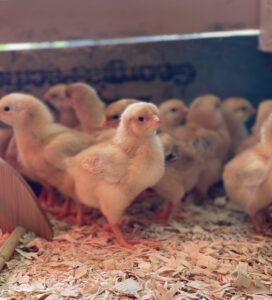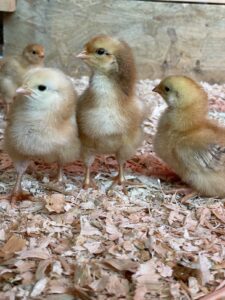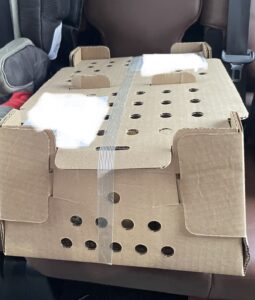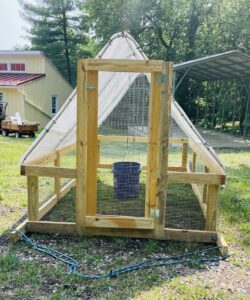What are Meat Birds?

I find myself in uncharted territory as a newcomer to the fascinating world of meat birds, eager to learn and share the trials and triumphs of raising these feathered friends. Last week, I received our first batch of meat birds, and I couldn’t be more excited. Raising my own meat has been one of my goals since starting this homestead 3 years ago. When I tell people I am raising meat birds, the first question I receive is, “what are meat birds?” They are chickens that will be raised for meat. “How will you ever be able to eat them, you love your chickens so much?” The answer for me is simple; I am a meat eater and knowing how my meat is raised, and what the animal is consuming, is of utmost importance to me. I would much rather consume meat that I have have spent time caring for and giving a good life than buy meat from a grocery store that has more than likely lived in inhumane conditions.
Meat Bird Breeds

When it comes to raising meat birds (or broilers, as some people call them), there is a diverse array of breeds specifically bred for their exceptional meat qualities. I purchased Freedom Rangers which were developed as an alternative to the Cornish Cross, the most widely recognized meat bird. The Freedom Ranger breed offers a balance between growth rate and foraging ability. These birds are known for their active nature and ability to thrive on pasture. The meat is flavorful and has a firm texture, making them a popular choice among those seeking a more natural and sustainable approach to raising meat birds. Other popular meat bird breeds include the Red Ranger and dual purpose breeds such as Sussex and Jersey Giants.
How I Chose a Hatchery

My meat birds came from Freedom Ranger Hatchery. I chose this hatchery because of its close proximity to me. I wanted the chicks shipped in the shortest amount of time possible. We ordered 30 and they added an extra chick incase something happened in transit. I picked them up at the local post office and all were alive and well. Some other popular and reputable hatcheries where others order their meat chickens, layer chickens, and other backyard birds are McMurray Hatchery and Meyer Hatchery.
How I Chose the Breed

When choosing a meat bird breed, I kept several things in mind: processing time, will they thrive on pasture, and meat quality. The chicks are currently in the brooder, but we will move them to pasture as soon as they are fully feathered, which for Freedrom Rangers is about 3.5 weeks. Keep in mind, laying chicks aren’t fully feathered until around 6 weeks (you can read more about laying chickens here). Once on pasture, the chicks will live in a meat tractor that I will rotate every few days around the pasture so they have constant access to fresh grass. We will also supplement their diet with meat bird feed. I am opting for a combination of both a grass and feed diet to achieve a balance between the benefits of natural foraging and controlled nutrition. Freedom Rangers can be processed between 9-11 weeks of age. Some breeds, like the Cornish Cross, can be processed between 6-8 weeks of age. The rapid growth of meat birds can lead to reduced mobility, discomfort, and compromised overall welfare of the chicken, so we chose a breed that had a slower growth rate.
Meat Bird Housing
There are several ways to house meat birds: broiler houses (usually for large-scale production), chicken coops, portable chicken coops, hoop houses and chicken tractors. We chose to build a chicken tractor because it allows the chickens to easily rotate on pasture and provides proper ventilation, cleanliness, access to clean water, appropriate lighting, and sufficient space for their size and growth. Two of the more popular chicken tractor designs come from John Suscovich and Joel Salatin. We chose to build the Suscovich tractor for several reasons. First, we are able to stand up inside of the tractor without having to bend over too far. Also, we thought it was more aesthetically appealing than other designs. Lastly, we felt we could use it to house other animals on our farm so it would provide multiple uses. We purchased John’s book to assist us with the build, and what we couldn’t buy at Lowe’s we bought on Amazon. Check out our chicken tractor materials here.
Check Back in a Few Weeks…
The meat birds will be processed somewhere between August 16-30th. A local butcher will process the chickens this time around, but we hope to process our own in the future. Check back in a few weeks to get an update on how the process of raising meath birds is coming along.
